Flapping (powered flight)
In an airplane, lift is provided by the wings while thrust is provided by an engine. This solution elegantly separates the two functions and allows each part to be optimized for its particular purpose. For a bird, both lift and thrust are provided by the wings. This dual function of the wings forces some compromises.
In particular, the flapping of the wings has to be asymmetrical: if the wing merely moved up and down, the lift and thrust provided by, say, the downstroke, would be canceled when the reverse happened during the upstroke. So, the two strokes have to be different. There are a number of ways a bird can make the upstroke differ from the downstroke: it can alter the wings’s camber, angle of attach, or surface area. And while any one of these choices may be used by a particular bird, the differences may be too subtle or rapid to spot in the field. Too subtle, that is, except for the common practice of varying surface area. Most birds spread their wings broadly during the downstroke, and contract their wings by bending them (at the wrist) during the upstroke. Typically, they will also vary the angle of attach, but that difference is harder to spot. In the examples, below, the only thing which is particularly obvious is the variation in surface area.
Many birds seem to have two ways in which they make the upstroke differ from the downstroke: one in which the upstroke is passive, and one in which the upstroke also produces lift and thrust. The result is two different flying gaits. (Human locomotion involves a number of different gaits such crawling, walking, and running). Some birds prefer one gait, some the other, and some can switch. Yet, I cannot tell the difference between the gaits while watching birds fly, so gaits are not illustrated below.
 These two Herring Gulls flying over the Lake show the asymmetry of the downstroke (left) and the upstroke (right). By folding the wing during the upstroke, the effective area is decreased and the gull brings its wing back up with a minimum of adverse consequences.
These two Herring Gulls flying over the Lake show the asymmetry of the downstroke (left) and the upstroke (right). By folding the wing during the upstroke, the effective area is decreased and the gull brings its wing back up with a minimum of adverse consequences.
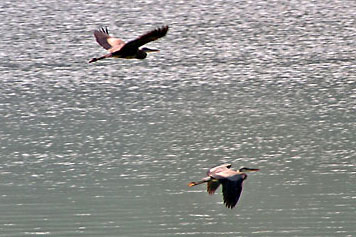 These two Great Blue Herons are in different parts of the stroke: on the left, a downstroke; on the right, an upstroke.
These two Great Blue Herons are in different parts of the stroke: on the left, a downstroke; on the right, an upstroke.
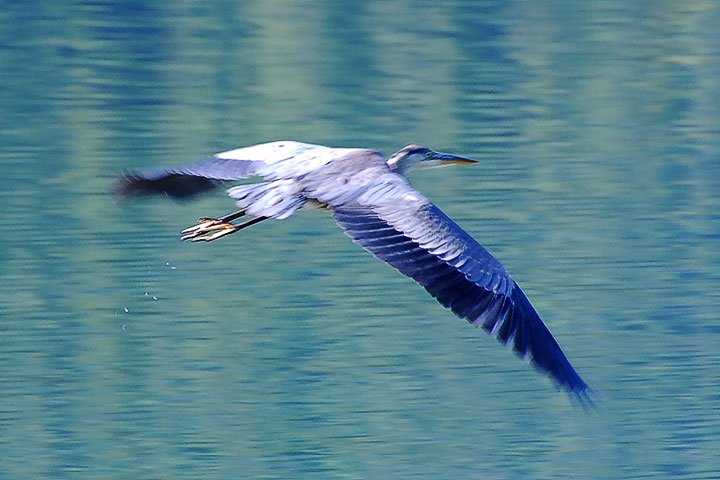 This Great Blue Heron is part way through a downstroke.
This Great Blue Heron is part way through a downstroke.
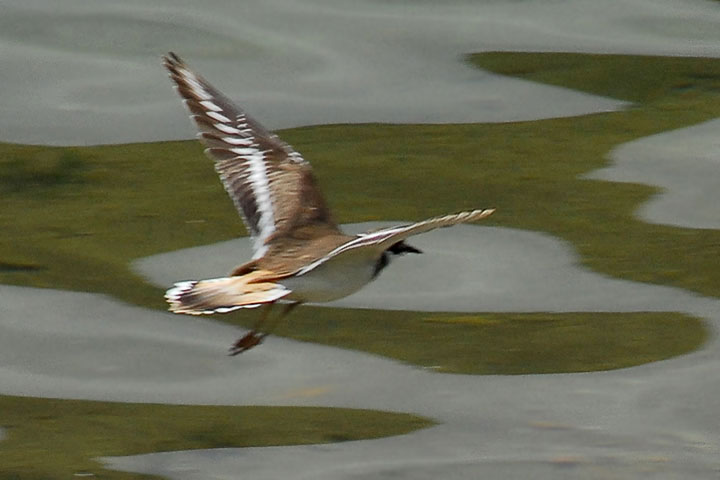 This Killdeer has just started a downstroke.
This Killdeer has just started a downstroke.
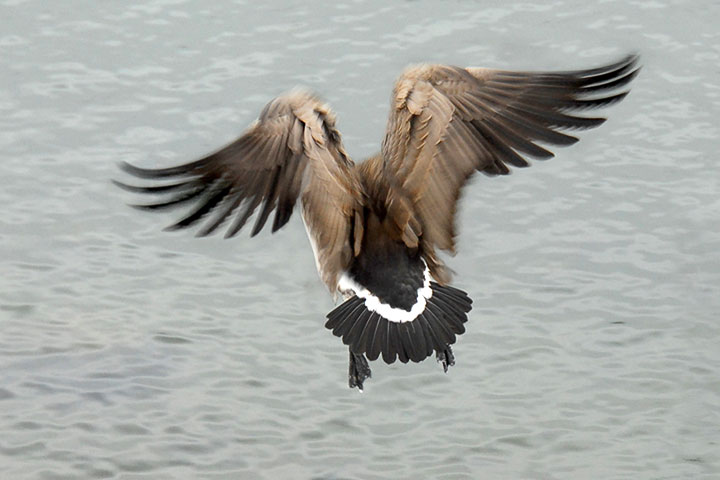 A Canada Goose approaches the water to land but is still flapping its wings; it is at the top of its upstroke and is bringing its hand wings into position for the downstroke. Its primary feathers are spread wide to allow the air to flow through and so further minimize the aerodynamic consequences of the upstroke.
A Canada Goose approaches the water to land but is still flapping its wings; it is at the top of its upstroke and is bringing its hand wings into position for the downstroke. Its primary feathers are spread wide to allow the air to flow through and so further minimize the aerodynamic consequences of the upstroke.
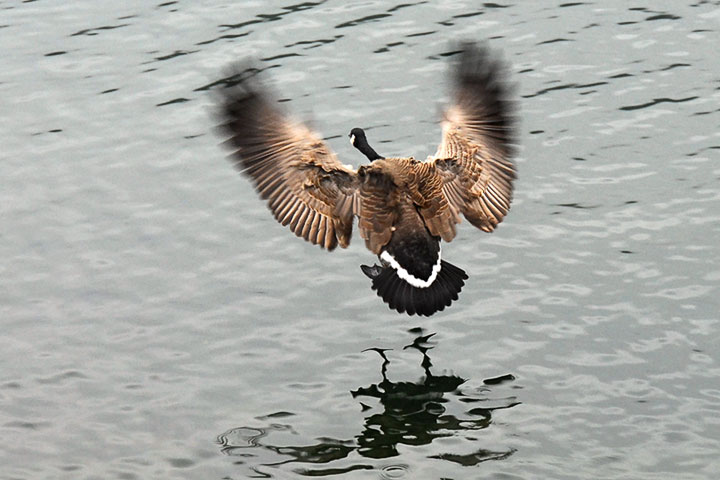 The same goose begins a downstroke just before touching the water.
The same goose begins a downstroke just before touching the water.
![]()